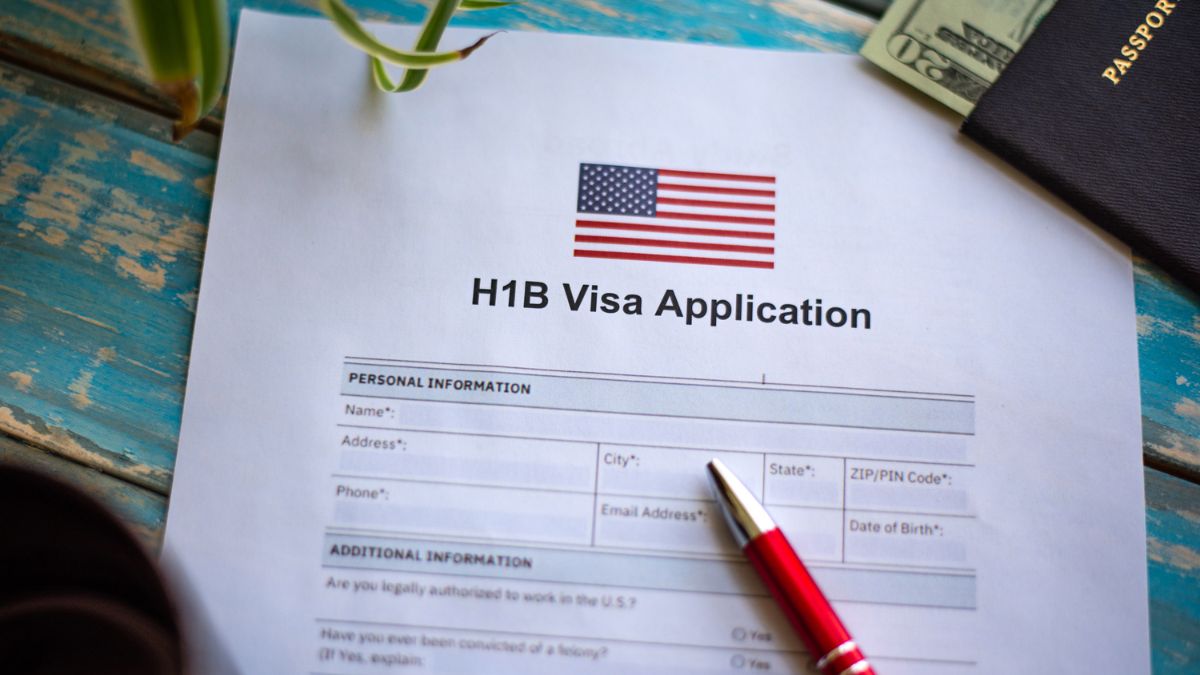Necessary Always Active
Necessary cookies are required to enable the basic features of this site, such as providing secure log-in or adjusting your consent preferences. These cookies do not store any personally identifiable data.
|
||||||
|
||||||
|
||||||
|

The recent announcement of a steep $100,000 annual H-1B visa fee by the U.S. President Donald Trump has triggered concern across global IT firms, particularly in India. According to Inc42, the move is aimed at limiting foreign worker inflow while prioritizing American employment.
The policy, which comes into effect for new applications, has far-reaching implications for companies that rely heavily on skilled Indian professionals under US immigration rules. Analysts suggest it may reshape staffing strategies and operational costs for multinational corporations in technology, consulting, and business process outsourcing.
The fee increase has already created uncertainty among recruiters and tech executives, who are assessing the financial impact of sending Indian talent to the U.S. The measure is part of broader U.S. efforts to tighten visa policy impact on Indian employees, potentially slowing the traditional flow of specialized professionals to American companies.
In fact, Trump himself had expressed support for H-1B visas on several occasions, most recently in a December 28, 2024 interview with the New York Post, stating, “I’ve always liked the visas….I have many H-1B visas on my properties. I’ve been a believer in H-1B. I have used it many times. It’s a great program.”
The question is what has changed now? Taking to his X account, SpaceX owner, Elon Musk responded to an H-1B critic, “The reason I’m in America along with so many critical people who built SpaceX, Tesla and hundreds of other companies that made America strong is because of H-1B. Take a big step back and F*** YOURSELF in the face. I will go to war on this issue, the likes of which you cannot possibly comprehend.”
The H-1B visa policy primarily affects countries that supply highly skilled tech talent to the United States, with India being the most prominent contributor, representing over 70% of beneficiaries. Other countries including China, Canada, and the Philippines, which also provide skilled labor to the U.S., may see secondary effects, but India faces the most significant disruption due to its dominant share in the IT talent pipeline. On June 2, 2025, The United States introduced new technology restrictions to stop Chinese companies from getting around existing sanctions.
Key points regarding the updated US immigration rules include:
The policy also emphasizes the broader U.S. objective of protecting American jobs. Industry observers suggest that while other countries supply talent, Indian employees are disproportionately affected due to their significant presence in software services, cloud computing, and IT consulting roles across U.S. corporations. The regulatory shift could compel multinational companies to rethink workforce allocation and talent deployment strategies, particularly for technology projects based in the U.S.
India’s Economy and the Ripple Effects of H-1B Visa Reforms
The sudden imposition of high H-1B visa fees is expected to have both immediate and long-term economic consequences for India. According to Hindustan Times, leading Indian IT firms could face additional operational costs ranging from $150 million to $550 million annually. This financial burden is likely to affect profit margins, particularly for mid-sized enterprises heavily dependent on U.S. client contracts. It seems Trump’s government is bringing some major changes in policy. On August 7, 2025, Trump imposed a 50% tariff on India.
Key economic effects of the new H-1B visa policy include:
Analysts warn that the visa policy impact on Indian employees may lead to delayed projects, revised delivery timelines, and adjustments in talent utilization strategies. Firms may also need to invest in training Indian teams to cover skills gaps previously filled by U.S.-based deployment of specialized staff.
The H-1B visa policy directly affects sectors reliant on cross-border talent deployment. Information technology services, software development, and business process outsourcing are among the most exposed. Companies including Infosys, Tata Consultancy Services, and Wipro have already experienced stock price volatility due to investor concerns about rising operational expenses (CNBC).
Specific sectoral implications include:
JPMorgan’s Toshi Jain also noted that, while the effect may be modest, it is expected to extend beyond India’s technology sector. He explained that a decrease in the number of new H-1B visa recipients could result in lower remittance flows to India.
Jain also sees a decline in Indian students choosing to go to the U.S. in the coming years, as the $100,000 visa fee may work as a new “tax” on finding a job in the U.S. post-education.
“The recent H-1B uncertainty is a reminder that India must create opportunities where world-class talent can thrive without leaving home,” said Apurv Agrawal, co-founder of Indian startup SquadStack.ai.
Additionally, organizations are exploring other US visa rules for India, such as O-1 and L-1 visas, to partially offset the reduction in H-1B availability. However, stringent qualification criteria and limited approvals mean these alternatives are unlikely to fully replace the scale previously achievable through traditional H-1B pathways. This regulatory shift could accelerate domestic hiring trends and investments in India’s technology ecosystem.
The enforcement of the new H-1B visa policy introduces immediate challenges for Indian IT firms and broader economic implications for India’s technology sector. Companies must navigate elevated costs, compliance complexities, and a constrained talent pipeline while exploring alternative visa options.
While the U.S. prioritizes domestic employment, India faces an opportunity to strengthen talent retention, domestic innovation, and strategic workforce planning. The evolving H-1B visa fee landscape is likely to influence global IT staffing strategies, project timelines, and operational models, compelling multinational firms to adapt without compromising service delivery or client expectations.